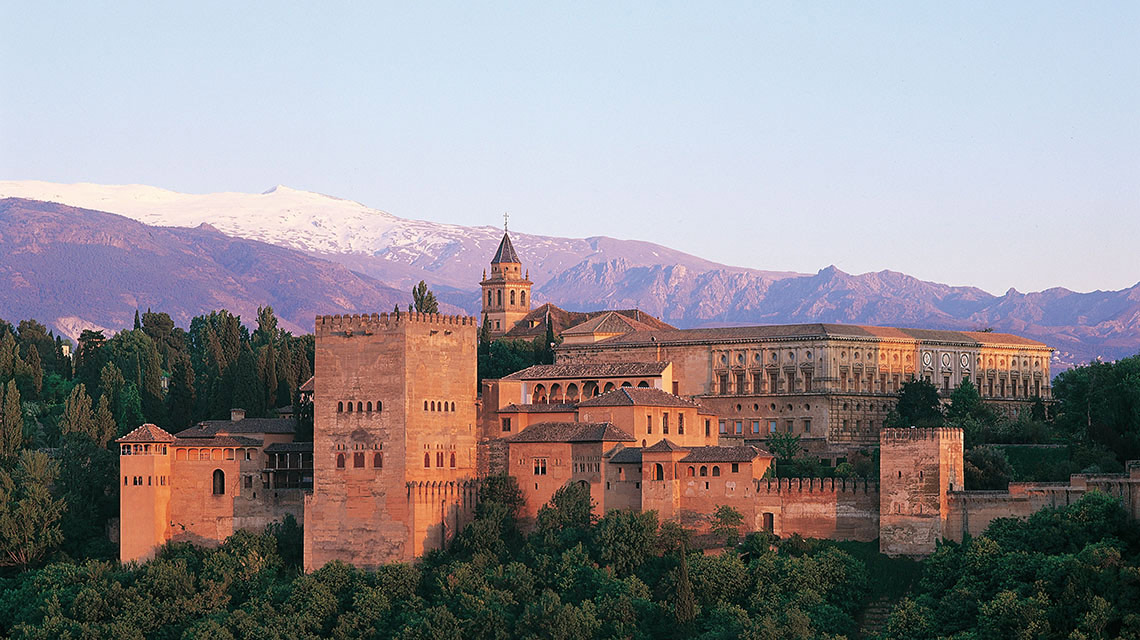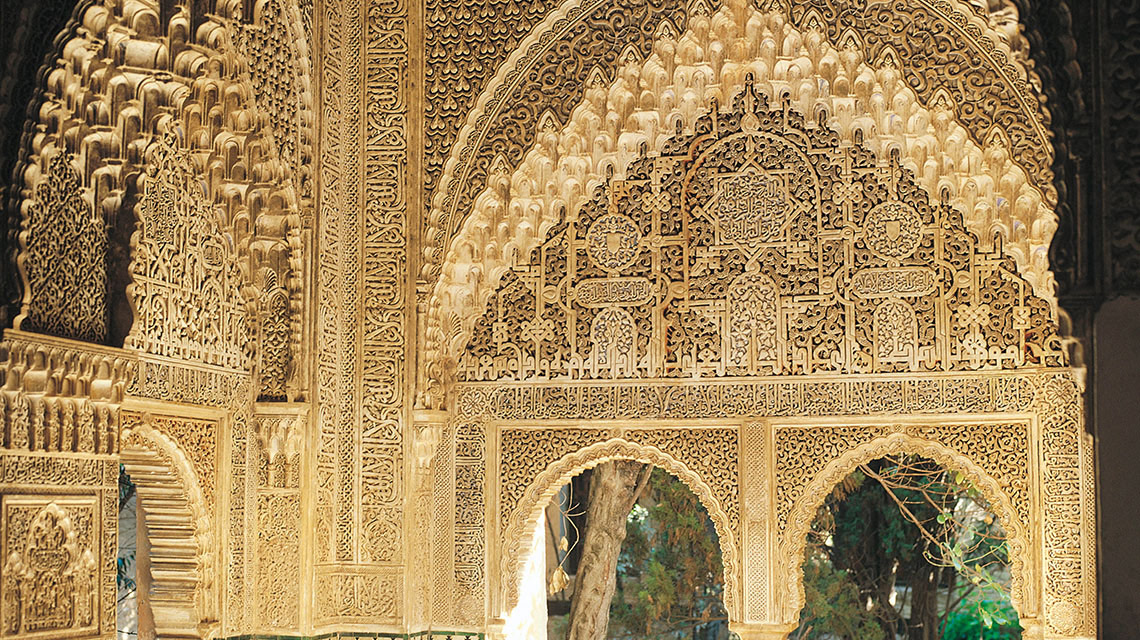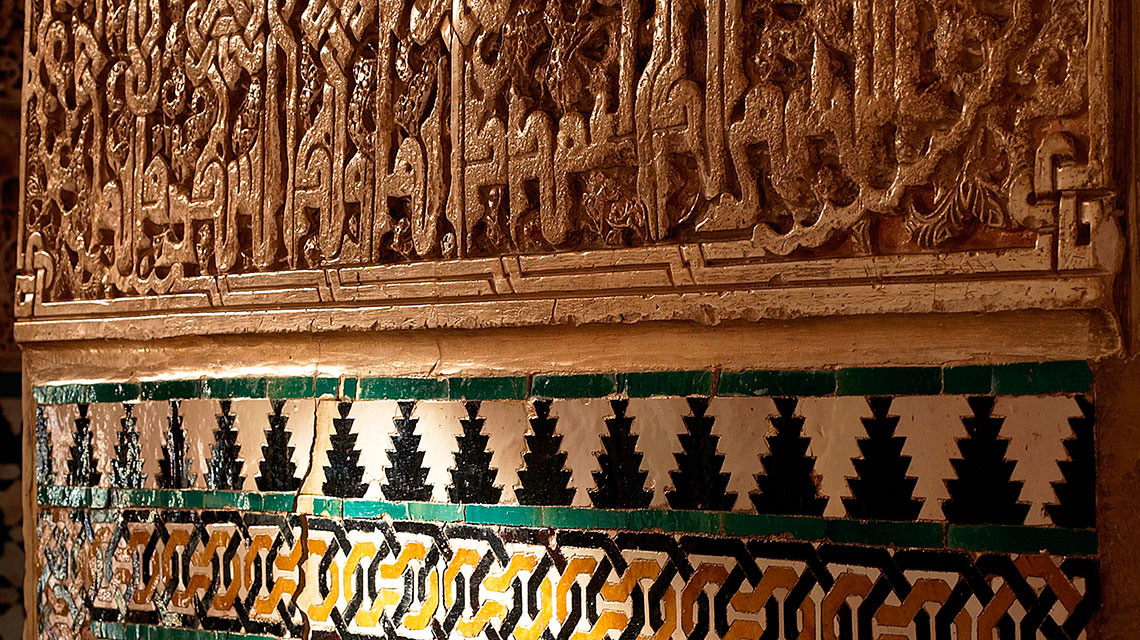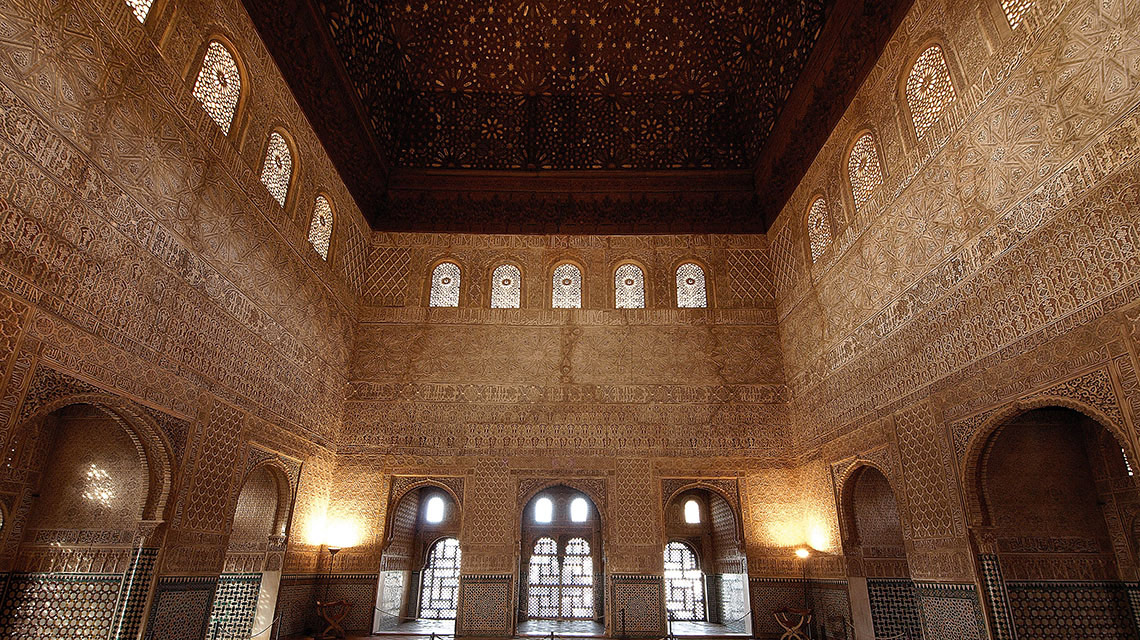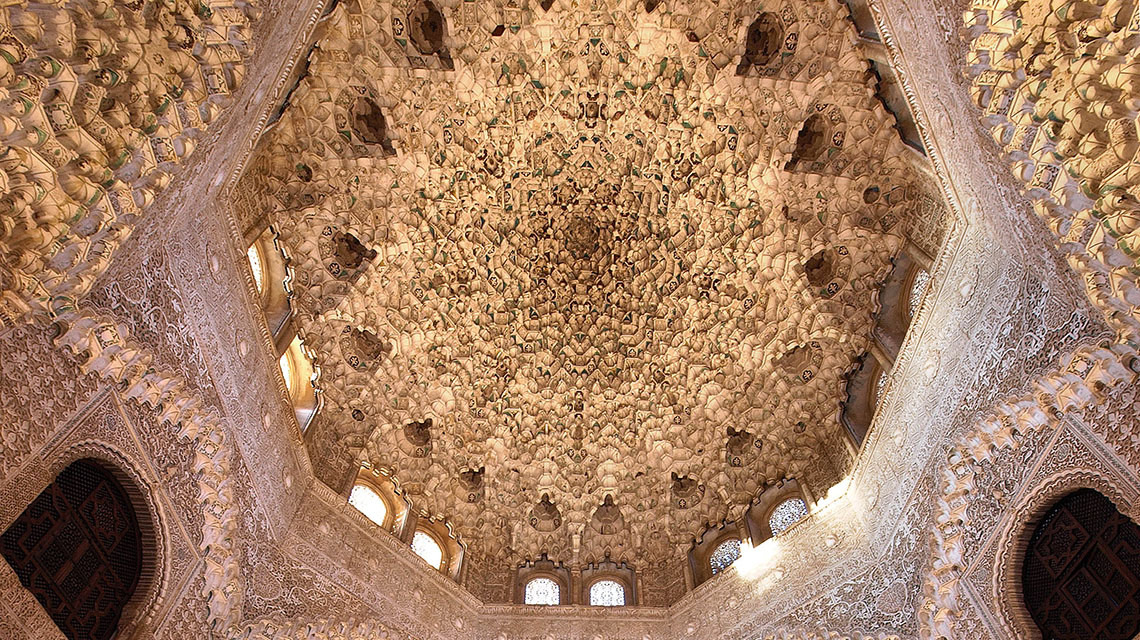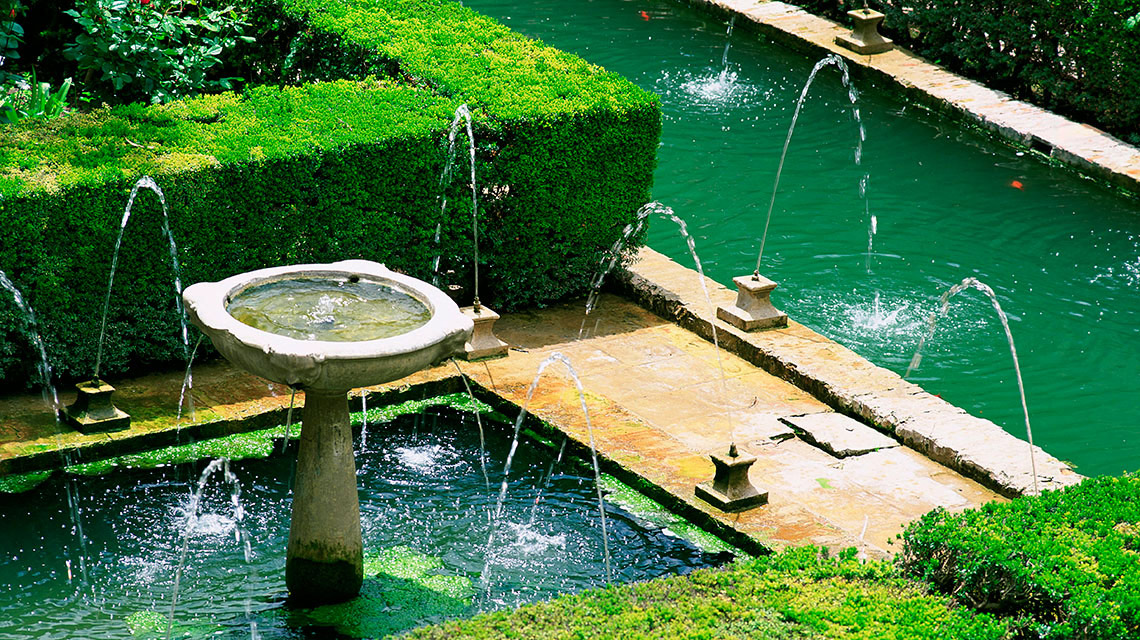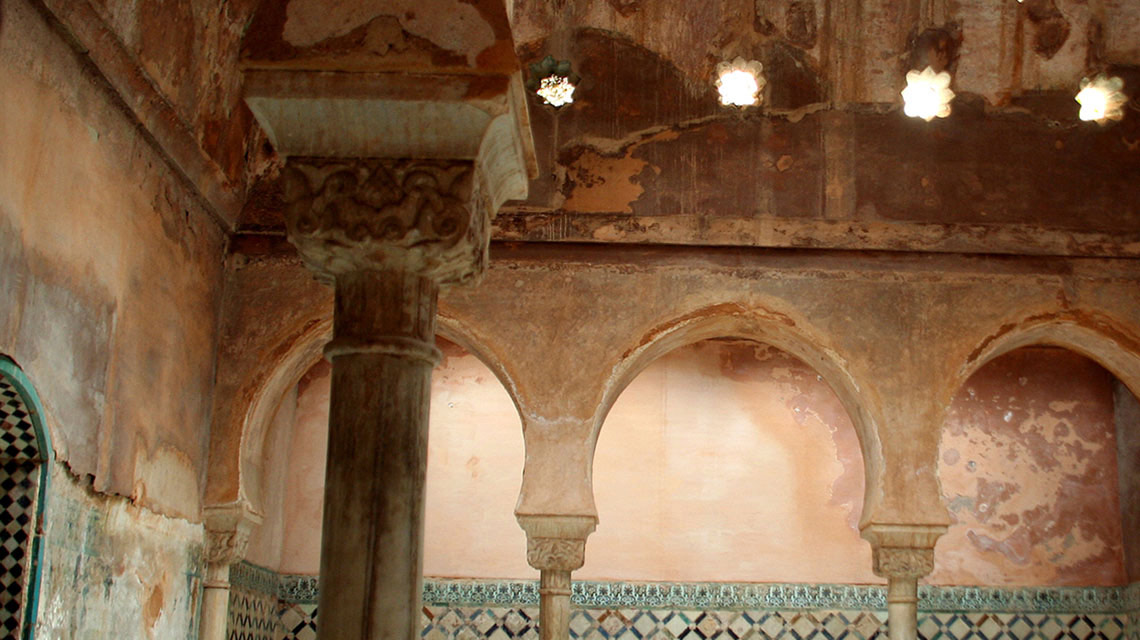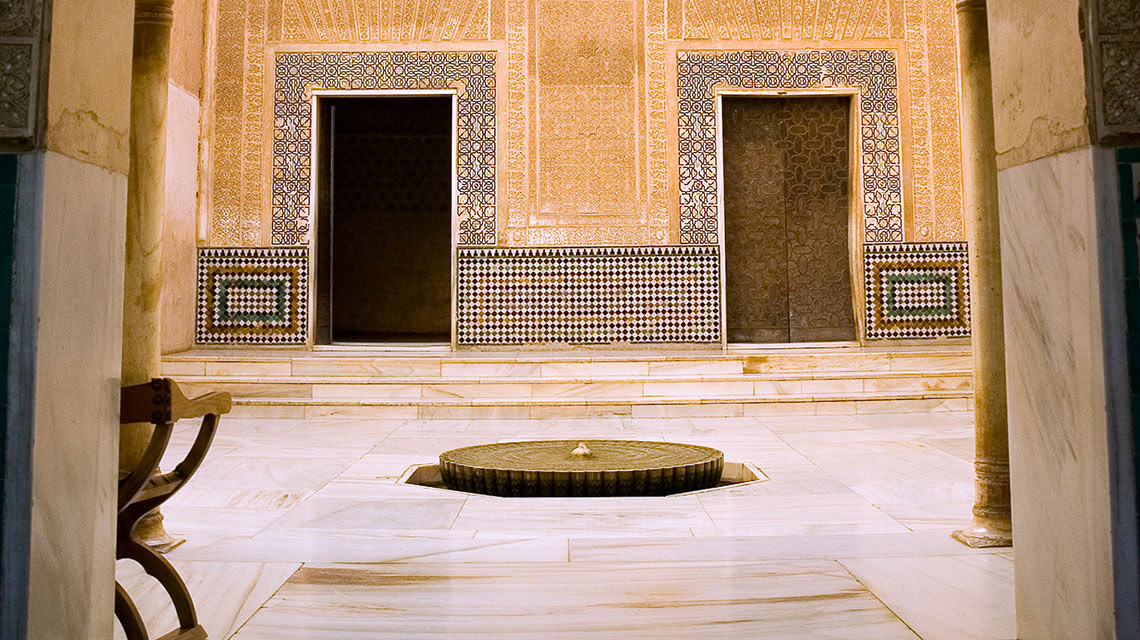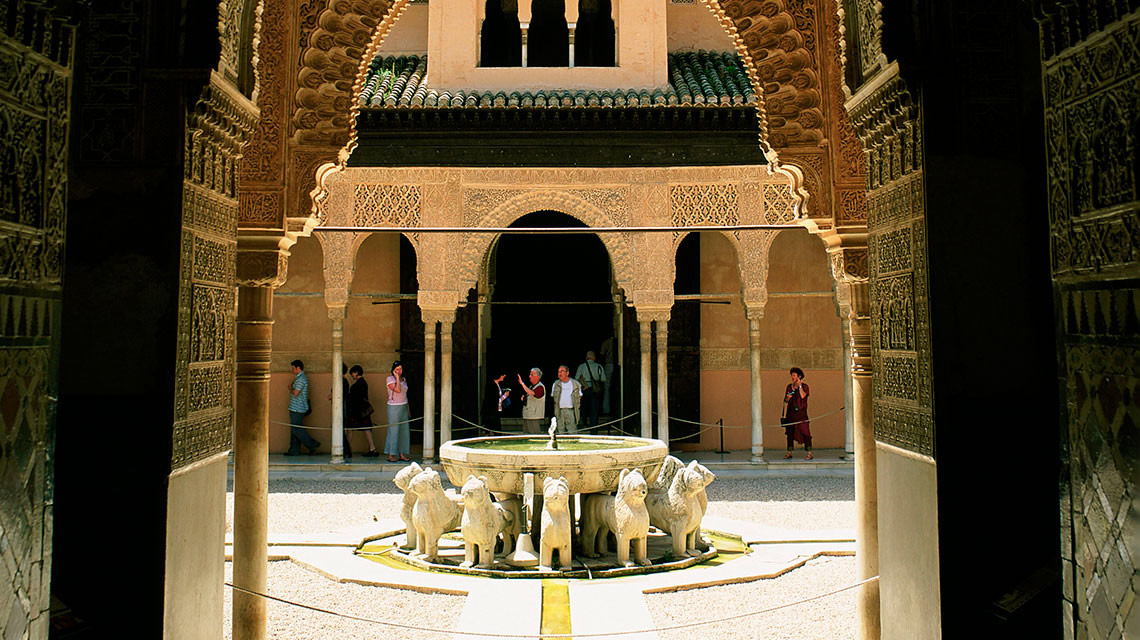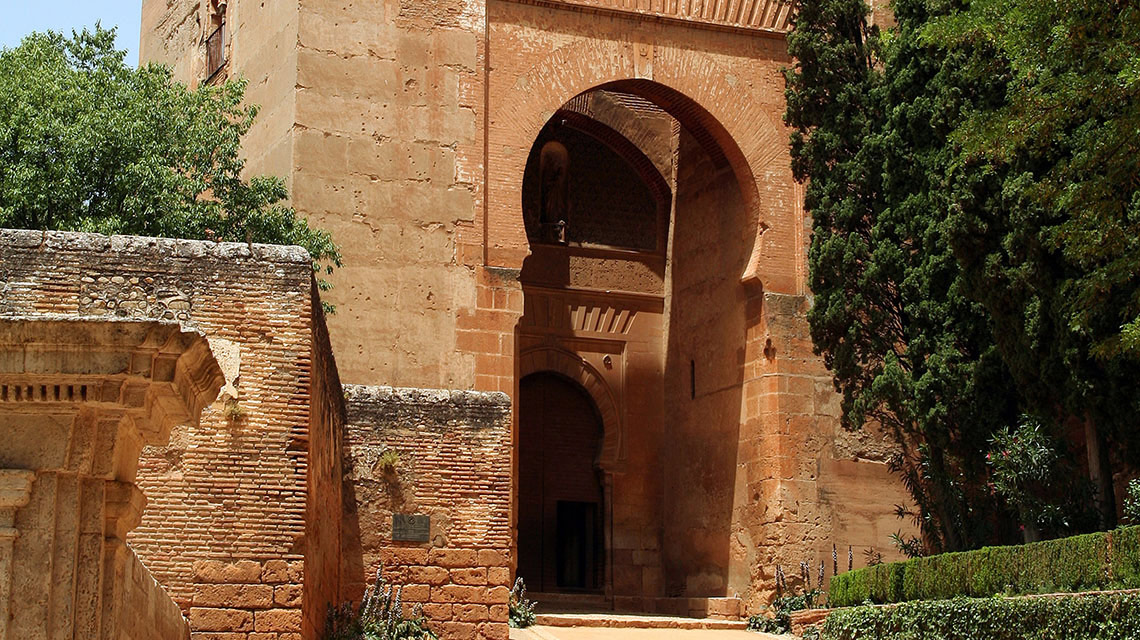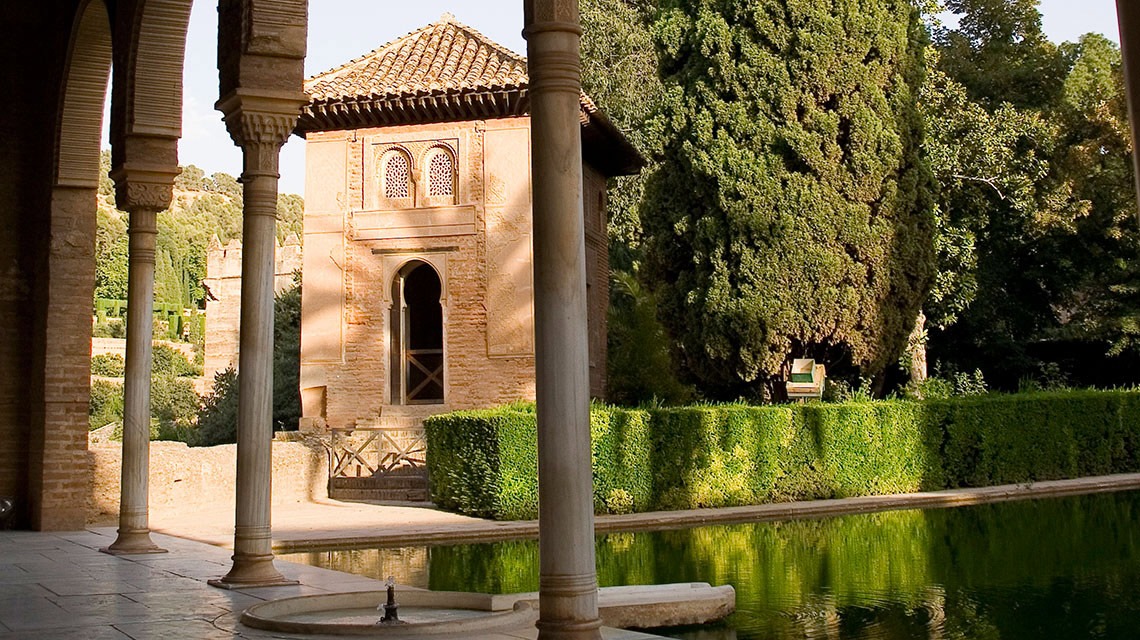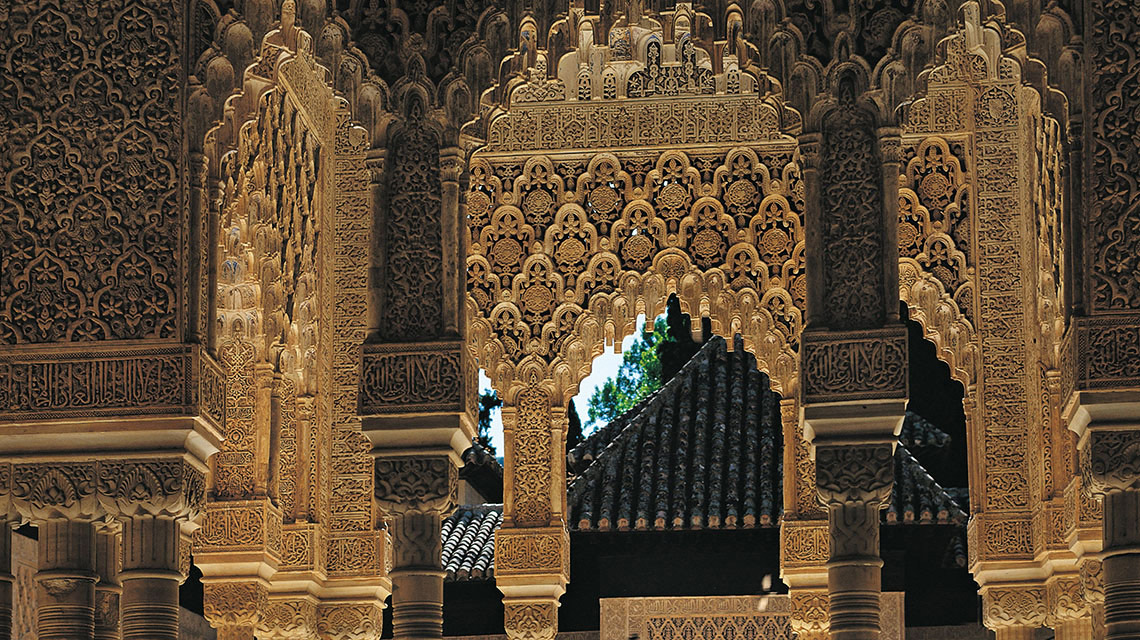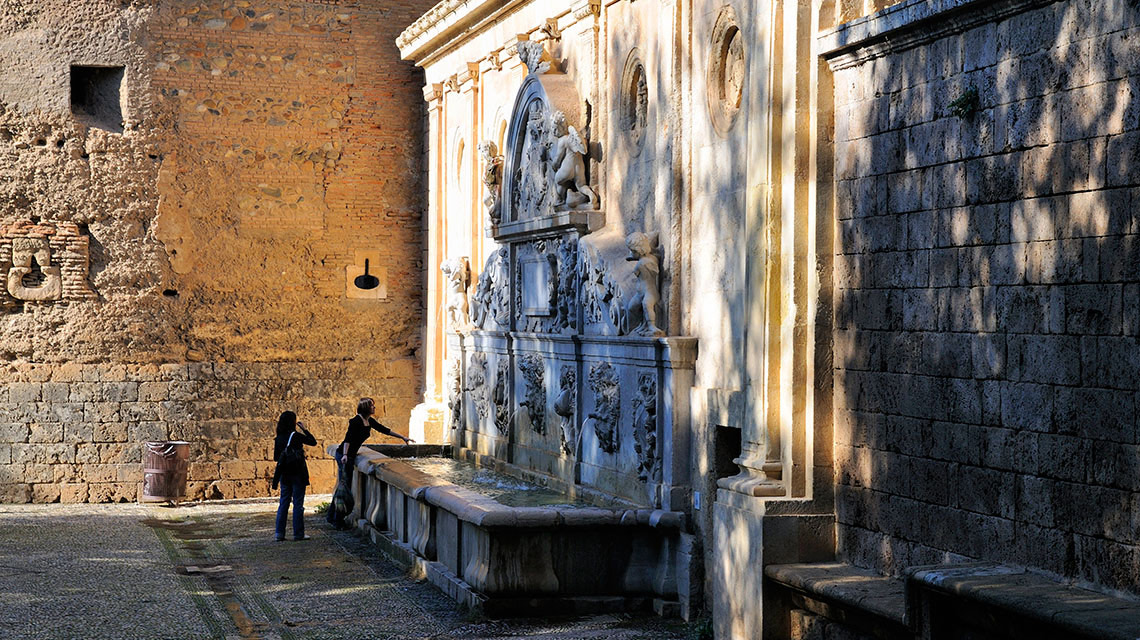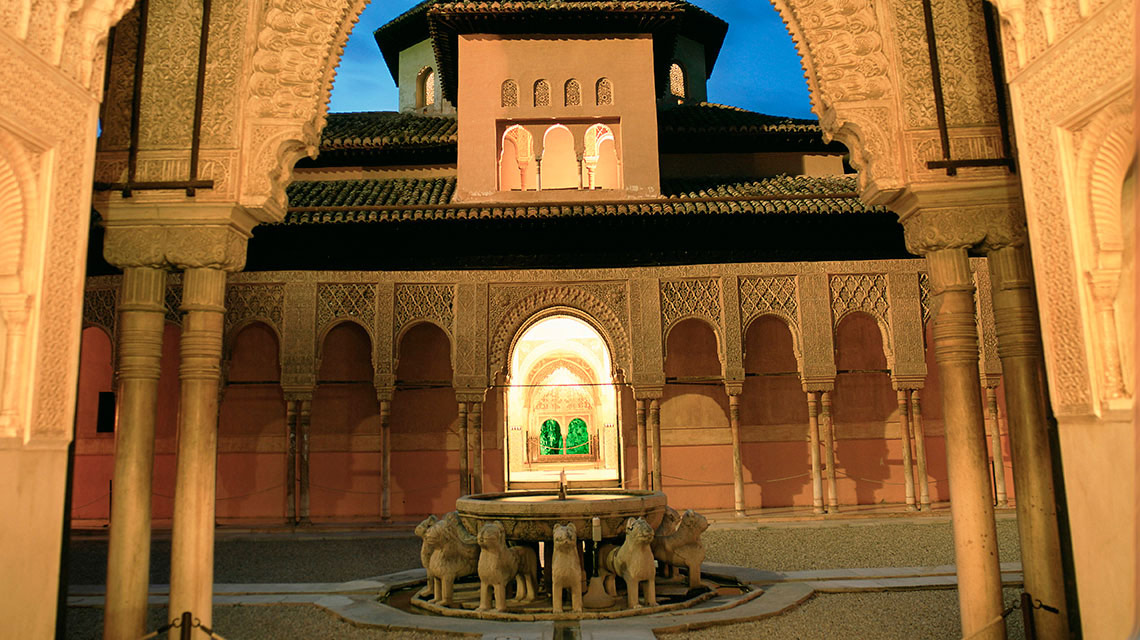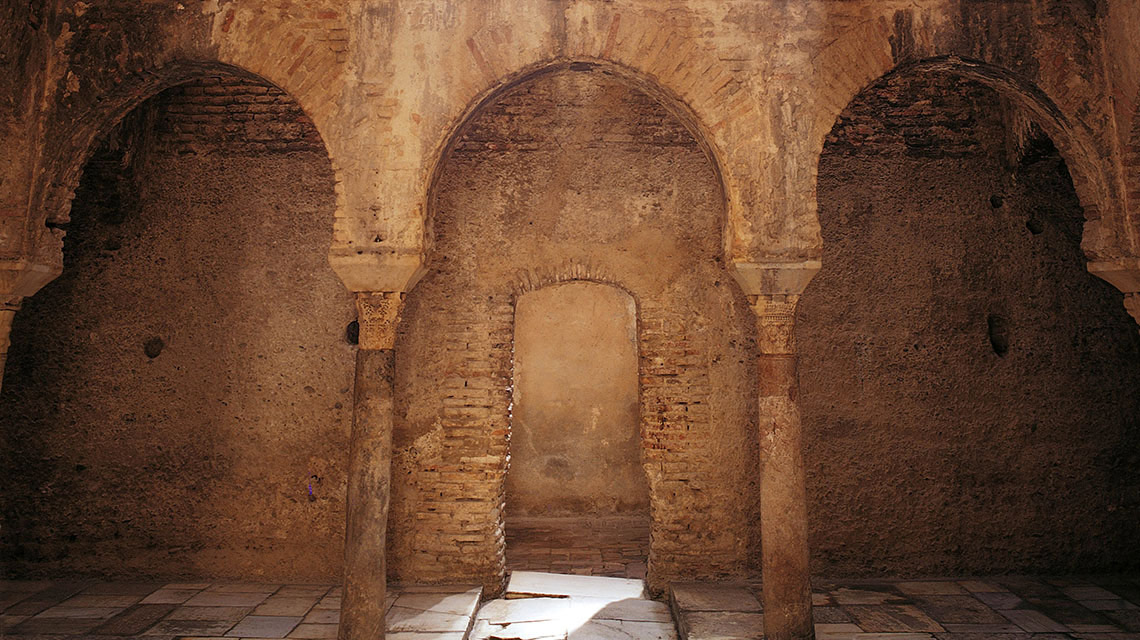The "Red One", Al-Ḥamrā, is without doubt one of the most impressive and beautiful examples of Islamic architecture in the world.
The splendour of the Nasrid era: A castle and a fortress, a royal palace and a courtly city, jewel of Arab architecture and a Unesco World Heritage Site.
We can differentiate the Alhambra very roughly into two spaces:
- The free and open complex, constituted by the Calle Real Alta and Baja, the San Francisco Convent and the Palace of king Charles V.
- The monumental complex with the Nasrid Palaces, the Alcazaba, the Partal and Generalife Gardens and the Generalife itself. If you want to visit this complex, we strongly recommend to book your tickets online and with some time in advance - for good reason the Alhambra is one of the world's most visited monuments.
Access:
From the town center by bus (C3 and C4) or driving our private car (parking in the chargeable car park). Or, which would be our choice, walking by foot on one of the two beautiful paths that lead to the Alhambra:
Either from Plaza Nueva through Cuesta de Gomérez street, the Alhambra Wood, the Puerta de las Granadas (Gate of the Pomegranates) to the Puerta de la Justicia (Gate of Justice).
Or from the Cuesta del Rey Chico (Little King's Slope), popularly known as the Cuesta de los Chinos (Pebble Slope), which starts from the left bank of the river Darro, at the end of the Paseo del Padre Manjón, popularly called the Paseo de los Tristes (Sad People's Avenue), between the Alhambra wall and the Generalife gardens.
Inside:
Once inside the monumental complex, in the Alcazaba fortress, which was one of the first constructions to be built in the Alhambra, enjoy the lovely views of Granada and its Vega (flood plain) from the La Vela Tower and take in the defensive organization of the Palatial City.
Concerning the Nasrid Palatial City, the most important areas are certainly the Mexuar-Oratory, the Comares Palace and the Palace of the Lions. The Mexuar-Oratory or Palace was the public reception hall of the Alhambra and housed the administration of justice, the Comares Palace or Hall was the official residence of the king and the Palace of the Lions comprised the private chambers of the royal family and is the palace where Nasrid art achieved its greatest degree of magnificence.
Walking through the Garden of the Partal you get to the Tower of the Capive and the Tower of the Princesses, from here a nice promenade leads to the gardens and the Generalife Palace with the lovely Patio de la Acequia (Patio of the Irrigation Ditch), the Patio de los Cipreses (Patio of the Cypresses) with the Cypress of the Sultana - where, according to the legend, Boabdil's wife used to meet a knight which led to the decapitation of all male members of his family - , and the Escalera del Agua, the "water staircase", supposed to be the oldest staircase in these gardens (it already existed in the Muslim period).
Don't miss out on the breathtaking views you can enjoy from the upper viewpoint of the Generalife's southern Pavilion.
Before visiting the complex itself you might want to get an idea of the history of this magnificent complex. We recommend to take a look at the official website of the Alhambra.


